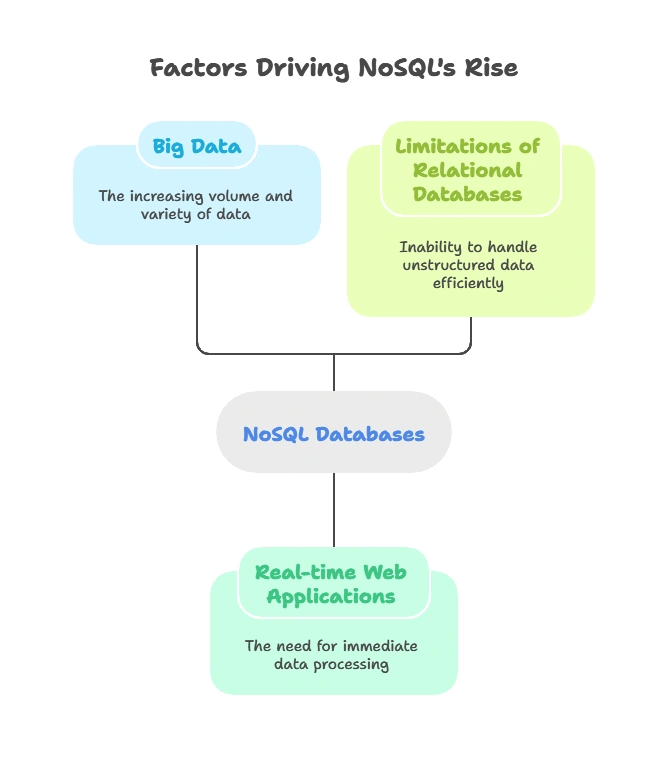NoSQL databases
NoSQL databases, or "Not Only SQL" databases, are designed to handle a variety of data models that differ from traditional relational databases. They are essential for applications requiring large-scale data storage, flexible schema design, and high-performance operations.
The Rise of NoSQL
The emergence of Big Data, the need for real-time web applications, and the limitations of relational databases in handling unstructured data led to the rise of NoSQL databases. They provide a way to store and retrieve data that is modeled in means other than tabular relations used in relational databases.

Types of NoSQL Databases
Document Databases
Document databases store data in JSON, BSON, or XML documents. Each document is a self-contained unit with a unique identifier, making it ideal for hierarchical data storage.
Example: MongoDB
- Data Model: JSON-like documents
- Use Case: Content management systems, e-commerce platforms
Key-Value Stores
Key-value stores are the simplest type of NoSQL database, where each item is stored as a key-value pair. They are highly performant and suitable for caching and session management.
Example: Redis
- Data Model: Key-value pairs
- Use Case: Caching, real-time analytics
Column-Family Stores
Column-family stores organize data into columns and column families. They are efficient for read and write operations across rows.
Example: Apache Cassandra
- Data Model: Rows and columns
- Use Case: Real-time data feeds, time-series data
Graph Databases
Graph databases use graph structures with nodes, edges, and properties to represent and store data. They are excellent for handling interconnected data.
Example: Neo4j
- Data Model: Nodes and relationships
- Use Case: Social networks, recommendation engines
Key Features of NoSQL Databases
Schema Flexibility
NoSQL databases allow for dynamic schemas, enabling the storage of varied and evolving data structures.
Horizontal Scalability
They are designed to scale out by distributing data across multiple servers, which ensures high availability and fault tolerance.
High Availability and Fault Tolerance
NoSQL databases are built to be highly available and fault-tolerant, often using replication and sharding to achieve this.
When to Use NoSQL Databases
Use Cases
- Applications with large volumes of unstructured data
- Real-time web applications
- Applications requiring flexible schema design
Advantages over SQL Databases
- Better performance for certain types of workloads
- More flexible data models
- Easier horizontal scaling
Limitations
- Less mature than relational databases
- Lack of standardization
- Potentially weaker transactional consistency
In this chapter, we explored the world of NoSQL databases, diving deep into their various types, key features, and specific use cases. NoSQL databases have emerged as a powerful alternative to traditional relational databases, offering flexibility, scalability, and performance for modern applications. Happy coding !❤️
